|
MIA Material BRDF |
- Where to find it:
- Shader Palette / Add New Shader
 NodeGraph / Right Mouse Click / Nodes / Shader Network / Standalone
NodeGraph / Right Mouse Click / Nodes / Shader Network / Standalone
MIA Material BRDF is an implementation of the popular mia_material found in MentalRay.
It tries to mimic the results you get in your offline renderer. Limitations exist due to the lack of raytracing inside of MARI.
For a detailed description of the MIA_Material click here.
GLASS
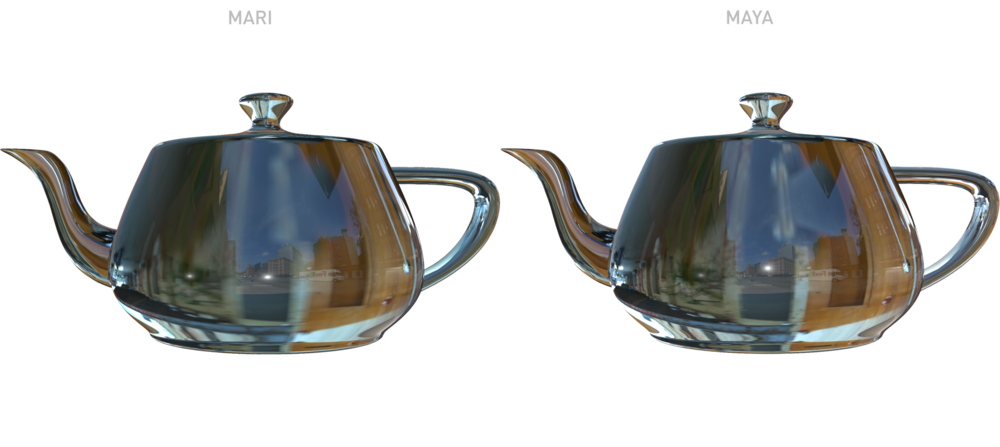
BRUSHED METAL
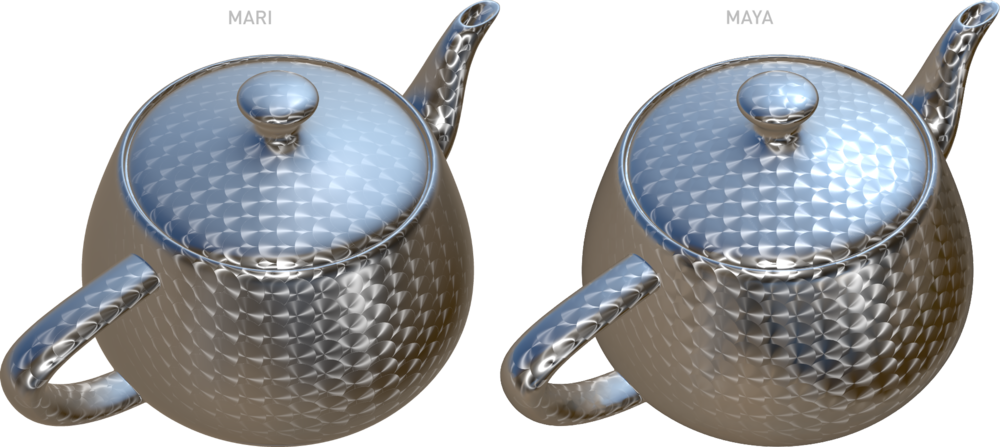
GOLD
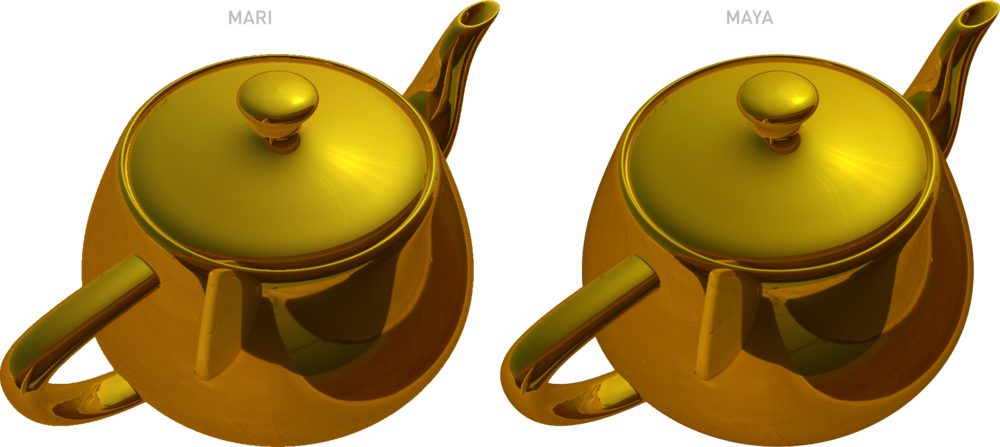
PLASTIC
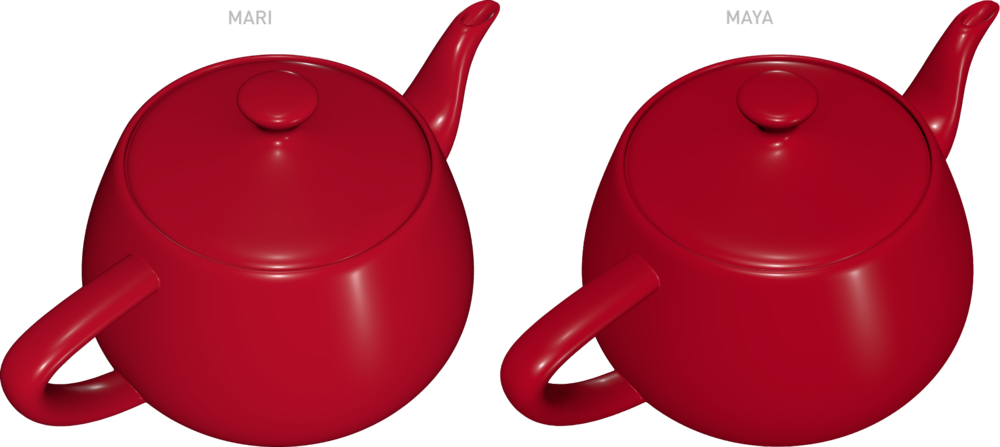
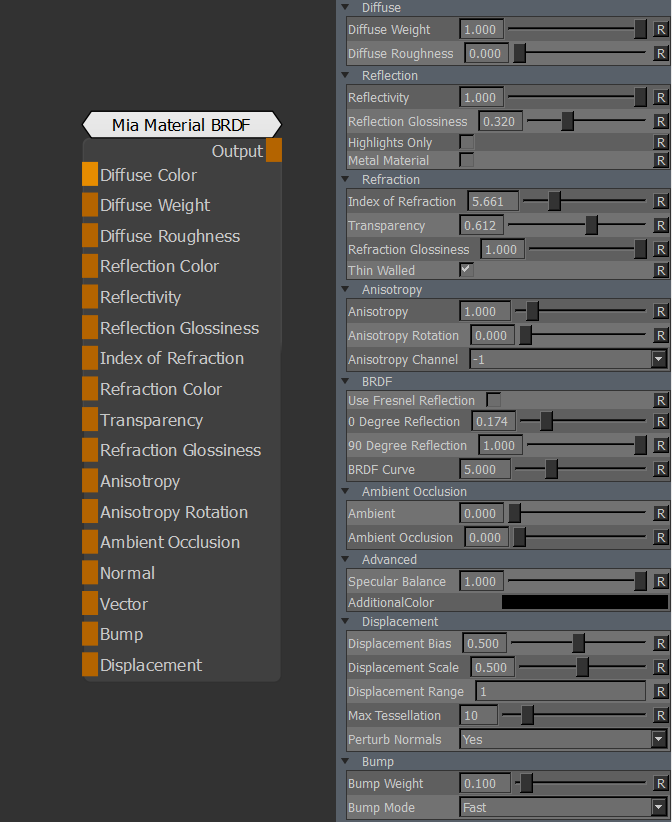
- Diffuse Color
Maps the diffuse color, i.e. the main color of the material.
- Diffuse Weight
Maps the amount of diffuse reflections.
- Diffuse Roughness
Maps the Oren-Nayar "rougness".
- Reflection Color
Maps overall reflectivity color. Normally white.
- Reflectivity
Maps overall reflectivity level. Multiplied by the BRDF Group parameters.
- Reflection Glossiness
Maps reflection glossiness. 1.0 = perfect mirror.
- Index of Refraction
Maps the Index of Refraction.
- Refraction Color
Maps the transparency (refraction) color.
- Transparency
Map the overall transparency level. Please note Transparency is a 'fake' showing more or less of the environment map.
- Refraction Glossiness
Maps the transparency glossiness/bluriness
- Anisotropy
Anisotropy. 1.0 = Isotropic.
- Anisotropy Rotation
The rotation of the anisotropy direction.
- Ambient Occlusion
Maps a custom (non-mari) ambient occlusion.
- Normal
Normal Map
- Bump
Bump Map
- Vector
Maps a vector Channel. Refer to Mari Online Help for more information
- Displacement
Displacement Channel
- Diffuse Weight
Diffuse Weight sets the desired level (and diffuse the color) of the diffuse reflectivity. Since the material is energy conserving, the actual diffuse level used depends on the reflectivity and transparency
- Diffuse Roughness
The diffuse component uses the Oren-Nayar shading model.
When Diffuse Roughness is 0.0 this is identical to classical Lambertian shading, but with higher values the surface gets a a more "powdery" look.
- Reflectivity
The Reflectivity (together with Reflection Color Input ) define level of reflections as well as the intensity of the traditional "highlight" (also known as "specular highlight").
- Reflection Glossiness
Reflection glossiness defines the surface "glossiness", ranging from 1.0 (a perfect mirror) to 0.0 (a diffusely reflective surface):
- Highlights only
Skips actual reflections, and only does light highlights from point lights
- Metal Material
Metal mode. Uses the diffuse color as reflection color.
- Index of Refraction
The Index of Refraction.
- Transparency
The overall transparency level. Please note Transparency is a 'fake' showing more or less of the environment map
- Refraction Glossiness
Defines how sharp or blurry the refractions/transparency are, ranging from a 1.0 (a completely clear transparency) to 0.0 (an extremely diffuse transparency)
- Thin Walled
Thin walled simulates 'solidness' for refractions (double sided) on single faces.
- Anisotropy
The parameter sets the ratio between the "width" and the "height" of the highlights, hence when anisotropy is 1.0 there is no anisotropy, i.e. the effect is disabled.
- Anisotropy Rotation
The rotation of the anisotropy direction. The values are in radian.
The value 0.0 is un-rotated, and the value 1.0 is one full revolution (i.e. 360 degrees)
- Anisotropy Channel
The space which defines the "stretch directions" of the highlights are derived from the texture space set by the Anisotropy Channel'
- -1: the base rotation follows the local object coordinate system.
- -2: the base rotation follows the bump basis vectors
- Use Fresnel Reflection
With Use Fresnel Reflection on, the reflectivity on the angle is then solely guided by the materials IOR.
This is known as Fresnel reflections and is the behavior of most dielectric materials such as water, glass, etc.
- 0 Degree Reflection / 90 Degree Reflection / BRDF Curve
With Use Fresnel Reflection off, the 0 Degree Reflection defines the reflectivity for surfaces directly facing the viewer, and 90 Degree Reflection defines the reflectivity of surfaces perpendicular to the viewer. The BRDF Curve parameter defines the falloff of this curve.
- Ambient
Used for doing more "traditional" AO, i.e. supplying the imagined "ever present ambient light" that is then attenuated by the AO effect to create shadows.
- Ambient Occlusion
Ambient Occlusion value, only has an effect with a value other than 0.0 on Ambient slider.
- Specular Balance
Intensiry of the highlights. The default value of 1.0 is the "as close to physically correct as possible" value. This parameter allows tweaking this default value where values above 1.0 makes the highlight stronger, and below 1.0 weaker.
- Additional Color
An additional color simply added to the other shading.
- Displacement Bias
Midpoint (0 disp) of your dispacement
- Displacement Scale
Intensity of your displacement
- Displacement Range
Intensity multiplier of your displacement
- Max Tesselation
Quality and detail of the screen space tesselation
- Perturb Normals
When on, new normals will be calculated after displacement.
- Bump Weight
Scale of your bumpmapping
- Bump Mode
Defines Accuracy vs. Performance Mode of the Bump Mapping.
